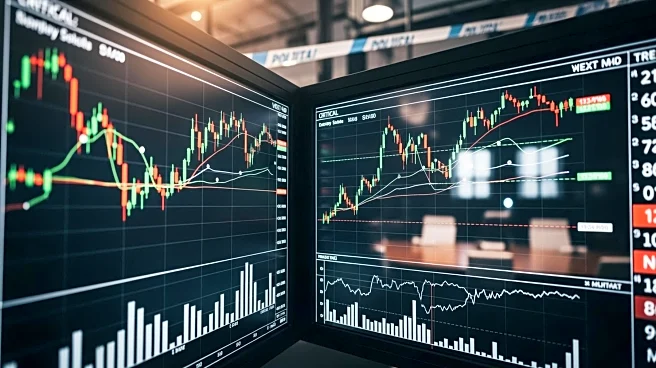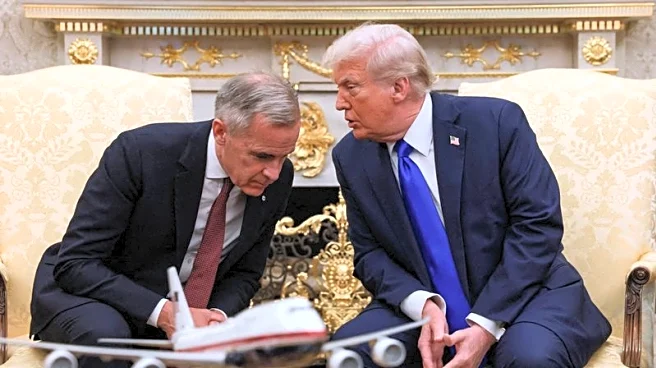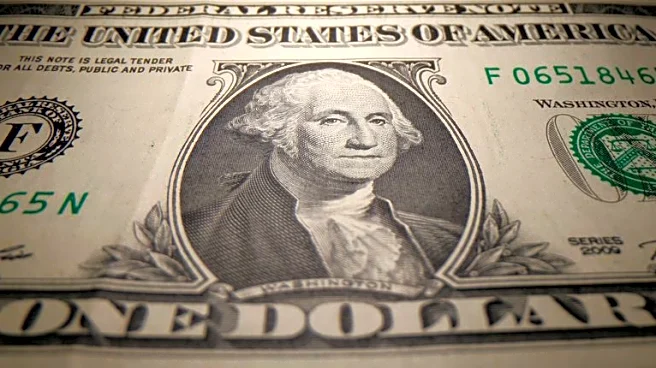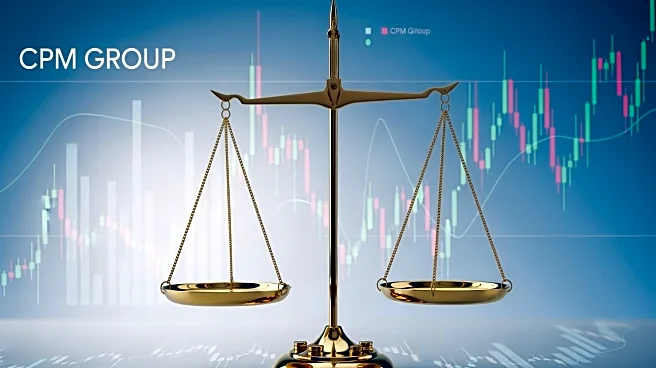What's Happening?
Gold prices have reached unprecedented levels, with spot gold hitting a record $4,381 per ounce on October 20, 2025, before settling at approximately $4,118 per ounce by October 24. This surge represents a 55-57% increase in 2025, marking the largest
annual jump since the late 1970s. The rise is attributed to a combination of factors, including a shift in the Federal Reserve's monetary policy towards easing, which has reduced the opportunity cost of holding non-yielding assets like gold. Additionally, geopolitical tensions, such as the ongoing conflicts in Ukraine and the Middle East, along with U.S. political uncertainties, have driven investors towards gold as a safe-haven asset. The weakening U.S. dollar, which has declined by about 12% in 2025, has further supported gold prices by making it cheaper in other currencies.
Why It's Important?
The significant rise in gold prices has broad implications for various stakeholders. Investors and financial institutions have seen substantial returns from gold and related assets, such as gold ETFs, which have experienced record inflows. The surge in gold prices also reflects broader economic and geopolitical uncertainties, highlighting the market's sensitivity to global events and policy shifts. For the U.S. economy, the Federal Reserve's rate cuts are a critical factor, as they influence inflation expectations and the attractiveness of alternative investments. The increased demand for gold as a hedge against economic instability underscores the ongoing concerns about global economic health and the potential for further market volatility.
What's Next?
Looking ahead, the trajectory of gold prices will likely depend on upcoming economic data and Federal Reserve decisions. The market is closely watching the Fed's meeting at the end of October, where further rate cuts could be announced. Additionally, geopolitical developments, such as U.S.-China trade relations and Middle Eastern conflicts, will continue to influence investor sentiment. Analysts predict that if current trends persist, gold could reach new highs, potentially exceeding $5,000 per ounce in the coming years. However, market volatility remains a concern, with potential profit-taking and corrections expected as prices fluctuate.
Beyond the Headlines
The current gold rally highlights deeper economic and geopolitical dynamics, including the role of central banks in stabilizing economies through monetary policy. The shift towards gold as a preferred asset reflects a broader trend of seeking stability amid uncertainty. This trend may lead to long-term changes in investment strategies, with increased emphasis on diversification and risk management. Additionally, the interplay between U.S. monetary policy and global economic conditions will continue to shape market behavior, influencing not only gold prices but also broader financial markets.














